|
|||
(Back to Preceding Week; on to Next Week) |
HUMMINGBIRD MYTHS: Especially in summer we get dozens of e-mails and phone calls from folks interested in hummingbirds. We also encounter thousands of hummingbird enthusiasts annually at lectures, workshops, and banding demonstrations we give around the country. Because "everybody loves hummingbirds," events such as our Hummingbird Mornings allow us to interact with the public and provide opportunity for people to ask questions, perhaps the most common being the "best" recipe for artificial hummingbird juice to place in feeders. (We recommend four parts water to one part table sugar.) Audience inquiries are often insightful or thought-provoking and in some cases science doesn't yet know the answers--such as when folks ask specifically where hummingbirds from South Carolina or West Virginia spend the winter. And then there are queries that, when voiced, bring a chuckle from the audience because they are: 1) Off-the-wall, 2) Lacking in logic, or 3) Just plain funny. Such questions are asked sincerely but sometimes indicate simple lack of understanding about how nature works and hummingbirds function. To clear up common misunderstandings about these tiny feathered wonders, this week at Hilton Pond we offer our "Top Ten Hummingbird Myths (Plus Two)"--complete with myth-busting facts that reveal the truth as we know it. Our comments below--several of which deal with feeding habits--may apply to hummers in general, but relate primarily to Ruby-throated Hummingbirds, Archilochus colubris, we've studied for almost a quarter-century in the eastern U.S., Canada, and Costa Rica.
All text & photos © Hilton Pond Center Young male Ruby-throated Hummingbirds have white throats and resemble females; some immature males have white throats with dark streaking and/or one or more red feathers; like females, young males always have white tail tips (above) HUMMINGBIRD MYTH #12: It is easy to sex adult Ruby-throated Hummingbirds when they arrive during spring migration; all the males have red gorgets and all the females have throats that are white (or lightly streaked with very pale gray). By mid-summer, however, sexing white-throated RTHU at your feeder is no longer possible. That's because young MALES have white throats and resemble females--including the white tips on their outer tail feathers. (Adult males have black tail tips.) Some recently fledged young males have dark (green or black) throat streaking--a "five o'clock shadow"--but this can be difficult to see. Not unless a young ruby-throat at your feeder gets one or more of his distinctive red throat feathers can you safely say he's a male--and NOT a female. White-throated young males depart North America for a winter in the Neotropics and return the next spring with an all-new plumage--including full red gorgets and black tail tips that show they are now adult males, full of testosterone and ready to mate.
All text & photos © Hilton Pond Center At least some red food coloring is excreted in hummingbird urine (note pink tint above), indicating the dye is not metabolized but passes through the kidneys--where it might cause problems HUMMINGBIRD MYTH #11: 'Way back when, folks made their own hummingbird feeders out of clear glass bottles, rubber stoppers, and bent glass tubing, then added red food coloring to the sugar water mix to get a hummingbird's attention. These days, virtually all commercially made hummingbird feeders have red plastic parts that negate any need for food coloring. Although the jury isn't in about possible dangers of red dye to hummingbirds, such chemicals are additives that might cause harm; since the dye is not needed, why take the risk? The REAL question is why some manufacturers of feeders and commercial hummingbird food still add red food coloring to their products. (Sometimes a hummer we catch at Hilton Pond Center has a pink tint to its urine--see photo above--a sure sign it has been feeding in some nearby yard where unsuspecting enthusiasts use red dye in their sugar water.) Hummingbird experts have advised several companies to stop selling ready-made mixes with coloring, but their executives respond they continue to offer artificial food mixes containing red dye because "that's what the public wants." For the sake of hummingbird safety and their own future profits, conscientious feeder makers should seize the chance to educate the public by NOT selling food mix with red dye. Keep your sugar water fresh and curious hummingbirds will eventually find and frequent your feeder--no matter what color it might be.
All text & photos © Hilton Pond Center Sometimes a droplet of hummingbird urine (above) will contain speck or two of dark matter--exoskeletons and other indigestible parts from tiny insects the hummer consumed HUMMINGBIRD MYTH 10: You can't build baby hummingbirds out of flower nectar, nor can an adult hummer maintain and replace muscles cells or feathers with what comes from artificial feeders. Both flowers and feeders contain almost nothing but sugar--nectar may be laced with minute amounts of minerals and other compounds--but these liquids are essentially carbohydrates good for quick energy rather than for other important metabolic tasks. Like other animals, hummingbirds must have an outside source of amino acids (i.e., proteins), so it's essential they consume carbs AND proteins AND energy-laden fats. Thus, in addition to flower nectar, hummingbirds hunt and eat tiny insects--fruit flies, gnats, mosquitoes, aphids, etc.--that are superb sources of fats and proteins (plus all the other necessary vitamins and minerals). Breeding females especially need an insectivorous diet, first to produce albumin and yolk of the egg and later to feed their fast-growing nestlings. In autumn, both sexes feed heavily on sugar water and nectar, if only to provide enough energy to hunt down and consume hundreds of insects that, in turn, allow hummers to store fat. Although hummers may convert some carbohydrates into fat, a fall feeding frenzy on insects allows Ruby-throated Hummingbirds to almost double their weight before beginning long-distance migration. The moral of this story is that sugar water feeders are not enough to satisfy your hummers; your yard should also provide a water element and natural plantings that attract fat- and protein-rich insects to round out the hummers' diet. So, for the sake of hummingbirds and the rest of nature--to say nothing of humans--please DON'T use insecticides indiscriminately.
All text & photos © Hilton Pond Center Hummingbirds have "typical" anisodactyl feet (above), with three long toes in front and one behind; the short tarsus barely has room for a band HUMMINGBIRD MYTH #9: Hummingbirds and swifts are classified in the same order-- Apodiformes--which means "no feet." Such a misnomer may have arisen in several ways. For one, neither kind of bird can walk because their legs are too far back on their bodies; thus, an adult hummingbird (or swift) on the ground with a broken wing--or a flightless chick fallen from a nest--are both essentially helpless. Except when preparing to land, a hummingbird in flight typically holds its legs tight against its body, where they disappear under contour feathers and provide streamlining. We're guessing when the first hummingbird study skins were sent back to European taxonomists for evaluation the birds' legs were tucked beneath the body feathers--giving the impression they had no feet. Its obvious, however, hummers DO have toes, feet, and legs; otherwise Perky-Pet wouldn't put perches on feeders, and there would be no such thing as a banded hummingbird.
All text & photos © Hilton Pond Center Leaving up a feeder in autumn not only does NOT stop hummingbird migration, it has potential to attract winter vagrants such as this juvenile male Rufous Hummingbird (above) that visited Hilton Pond in late September 2002 HUMMINGBIRD MYTH #8: Adult male Ruby-throated Hummingbirds begin moving south as early as late July or early August, followed sometime thereafter by adult females. Juveniles stay a good deal longer. Hummingbird departure is believed to be triggered primarily by photoperiod; when the days get short enough, hummers move out. Our records indicate 95% of ruby-throats are gone from Hilton Pond Center by the end of September, 99.99% by mid-October. We maintain at least a dozen feeders year-round and we've NEVER had a ruby-throat stay past 18 October. For anyone to think keeping up a sugar water feeder past Labor Day would alter hundreds of thousands of years of hummingbird migration behavior is a very egocentric view of the universe! Although ruby-throats are cold weather wimps that do bail out long before first frost, running a feeder throughout the fall has the added promise of bringing in western vagrant hummers that arrive in late autumn or winter--such as the two Rufous Hummingbirds that visited Hilton Pond well after Labor Day on 23 September and 20 November.
All text & photos © Hilton Pond Center An adult male Ruby-throated Hummingbird (above) whose fresh, clean plumage indicates he is a recent spring arrival; he's making use of sugar water mix available from the feeder but has no problem finding other food sources HUMMINGBIRD MYTH #7 More egocentrism. Hummingbirds are curious, and they are survivors. A hummer likely knows the location of every reliable feeding source within up to a half mile of its main territory. If you go on vacation and let your feeders go dry, the hummers may abandon your yard and opt for a neighbors'; they might not return (we doubt they hold grudges), but they're NOT going to die. Besides, few hummingbirds--probably only sick or defective ones destined to succumb anyway--become so dependent on artificial feeders they fail to take natural nectar from flowers. And don't forget hummingbirds get primary nutrition from tiny insects abundant year-round in most habitats. The only scenario we can imagine for hummingbirds perishing if you were to quit feeding would be if you lived in the middle of a desert and were the only food source for miles and miles; in that case, please hire a dependable hummer sitter to replenish your feeders if you plan to leave your oasis and vacation elsewhere.
All text & photos © Hilton Pond Center The Ruby-throated Hummingbird above, photographed visiting an Inga tree in Costa Rica in early February 2008, spends much of the tropical winter resting--not feeding; note the gap in the wing caused by primary feather molt HUMMINGBIRD MYTH #6: Think about it. If hummingbirds had to feed constantly, when would they sleep? When would adult males find time to defend their territories and mate? And how would females be able to incubate eggs for hours on end? On days at Hilton Pond Center when we're particularly successful at catching Ruby-throated Hummingbirds we with net or trap, we hold the hummers temporarily in soft mesh bags. We don't keep a bagged hummingbird more than an hour; instead we shoot for 20 minutes or less and usually have the bird captive for fewer than five minutes. Interestingly, adult male Ruby-throated Hummingbirds actually LOSE weight in mid-summer at the peak of the breeding season, primarily because they spend so little time feeding and so much energy chasing interlopers away from feeding territories. A particularly aggressive male that weighed 3.1 grams when he showed up after spring migration might drop as low as 2.5 grams due to territorial displays and frenetic chases. Although hummingbirds do just fine during the short time we have them in captivity, we typically insert their bills in a feeder just prior to release; about 98% of the time they lap up a little sugar water before darting off to resume normal behavior--and sometimes fly right back into the same trap a few minutes later.
All maps, text & photos © Hilton Pond Center Ruby-throated Hummingbirds have the most extensive distribution of any hummer species (see map above) HUMMINGBIRD MYTH #5: Ruby-throated Hummingbirds are probably the most common of all 339 or so hummer species, and have the broadest distribution. During spring and summer they are the only breeding species in the easternmost 38 states and southern Canada (see map above); their nesting range appears to be expanding. In winter the vast majority of cold-intolerant ruby-throats fly to central Mexico or one of the seven countries of Central America--but they do NOT go all the way to South America. (In fact, they are extremely scarce in Panama west of the Canal Zone and rarely get into eastern Panama. Our study site in Guanacaste Province, Costa Rica is the southernmost dense population of ruby-throats known to science.) Historically, a few Ruby-throated Hummingbirds overwintered in south Florida and eastern Texas, but with increasing regularity are being found year-round throughout the Gulf Coast and Atlantic Coast states--and even at a few inland sites. (Global warming, anyone?) And by the way, hummingbirds DON'T hibernate--although they can lower their body temperatures as much as 30 degrees and go into torpor during cool nights.
All text & photos © Hilton Pond Center Bill Wigley of Huntsville AL photographed a pre-dawn swarm of Ruby-throated Hummingbirds (above) on 6 Sep 2005; rest assured this is NOT a family group (nor is it a "Photoshopped" image) HUMMINGBIRD MYTH #4: Humans love to anthropomorphize about nature, i.e., to apply human traits to animals. Folks delight in the fanciful story of lovesick swans that pair for life and shrivel up and die if anything happens to the mate. Although monogamy is the preferred mating system for most human societies, very few animals are 100% monogamous--including Ruby-throated Hummingbirds. When someone tells us about that "pair" of ruby-throats that comes to a backyard feeder, we're always skeptical; the pair bond for many hummingbird species lasts about three-tenths of a second--as long as it takes to copulate. In ruby-throats the male guards his territory with a vengeance, defending against all other adult males but also against females and juveniles. After a female finally agrees to mate with a particularly virulent male, she goes off and lays an egg in the nest she built herself from spider webs and lichens. The next copulation may be with the same male, but there's always a possibility Male #2 will attract her attention and copulate--after which the female lays her second egg. Having a different male fertilize each of her two eggs is actually a pretty good strategy; a second father for her second offspring provides a degree of insurance if there's something genetically deficient about the Male #1. A male ruby-throat, by the way, spends LOTS of time trying to win over females and may breed with several during any given year, leaving incubation and nestling care to mates while he defends his territory. Once the chicks fledge they are pretty much on their own and as far as we know are just as likely to be bombarded by their father as by any other aggressive male. (Incidentally, hummers of any age or sex can be "territorial"; young hummingbirds quickly learn to monopolize a feeder, and a female ruby-throat may defend a nest viconity AND her own feeding territory.) This hardly results in the "big happy family" concept some anthropomorphizers mistakenly apply to what is actually a harem system in Ruby-throated Hummingbirds.
All text & photos © Hilton Pond Center Hummingbird tongues have a split tip (above), the better to lap up more nectar and sugar water; this high-speed photo was made by inserting the bill of a hand-held hummer into a shallow container of sugar water HUMMINGBIRD MYTH #3: It's amazing how many people think the hummer's bill is like a long straw the bird uses to suck up nectar and sugar water; likewise, folks are often surprised a hummingbird can even open its bill. Actually, the upper and lower mandibles can separate at about a 30 degree angle, allowing the hummer to stick out its tongue or to capture tiny insects. After inserting its three-quarter-inch long bill into a flower or the port on a feeder, a Ruby-throated Hummingbird opens the bill tip slightly and sticks its tongue out and in rapidly--about 3-5 times per second. If you have a feeder with a clear plastic base you may be able to see the hummer's tongue flicking into the juice; also, the nearly transparent tongue is sometimes visible just as the hummer removes its bill from the feeder or when it flips the tongue out to clean juice droplets from its bill. The efficiency of the hummingbird tongue is enhanced by feathery edges that draw in more nectar via capillary action and by a split tip (above) that creates even more surface area. The tongue--which can extend another three-quarters of an inch beyond the bill tip--is divided at the base, with each fork wrapping around the back of the bird's jaw and inserting in its forehead. To summarize, hummingbirds don't suck when they drink; they lap up nectar and sugar water just like a cat or a dog would do.
All text & photos © Hilton Pond Center This Hummingbird Clearwing, Hemaris thysbe (above)--a day-flying moth that is a hummingbird mimic--was photographed July 2008 on Butterflybush at the Wadsworth OH home of Ron & Cindy Hilton Farver HUMMINGBIRD MYTH #2: Nope, hummingbirds must be fully grown and developed before they leave the nest, i.e., baby hummingbirds cannot fly. If you see a baby hummingbird at your feeder, it's a bumblebee; if you see a tiny hummer at a flower, it's undoubtedly one of the Hummingbird Moths (above), a type of Sphinx Moth (Sphingidae). These amazing diurnal insects are hummingbird mimics that often mislead casual observers with their morphology and behavior: The Hummingbird Moth beats its scale-less, semi-transparent wings very fast and is able to hover; when feeding it extends a dark, rolled-up proboscis that looks for all the world like the long, thin bill of a hummingbird; and some of these moths even have abdominal appendages that, when extended, resemble a hummingbird's flared tail. Additionally, Hummingbird Moths hang out in the same habitats as hummers AND take flower nectar, so it's understandable some folks might mistake these lepidopterans for hummingbirds. Incidentally, we often get inquiries from Europe and Asia about travelers who say they saw hummingbirds on those continents. However, because hummingbirds are native ONLY to the Western Hemisphere, we're always confident those folks have seen some species of Sphinx Moth acting as a hummingbird mimic.
All text & photos © Hilton Pond Center Canada Goose and Ruby-throated Hummingbird (above): Who's hitchhiking whom? AND THE #1 (most preposterous) HUMMINGBIRD MYTH: Hummers are the smallest of birds. A Ruby-throated Hummingbird is about the size of an adult human's thumb and migrates long distances in autumn from North America to the Neotropics and back again the following spring. Even one-way this seems like an unbelievable feat, so sometime someplace somehow someone concluded it just wasn't possible for hummers to fly 500 miles across the Gulf of Mexico all by their widdle bitty selves and concluded they must be hitchhiking on the backs of bigger birds. But which is more preposterous, that under their own power Ruby-throated Hummingbirds migrate over land at treetop height and at sea just above the waves, or that they climb aboard Canada Geese and hold tight while the honkers ascent to bone-chilling altitudes as high as 29,000 feet? Besides, geese aren't even going to the same destination; the bulk of the eastern goose population ends up wintering from Virginia to the Carolinas, while ruby-throats are aiming farther south for Mexico and Central America. No, it's not hummers that are hitching rides on Canada Geese, but the other way around. If you look carefully at photos of migrating geese (see example above), you'll note beneath virtually every goose is a tiny hummingbird, delicately balancing the much bigger waterfowl on its iridescent green pea-sized head. Thus, we speculate geese are actually riding the stout backs of these tireless hummingbirds and getting off at the first stop along the South Atlantic Coast, letting the hummers fly unimpeded toward their more distant wintering grounds in sunny Mexico and beyond. Hummingbird myths, indeed. We hope we've dispelled the "Top Ten" (plus two), even as we've started one of our own at Hilton Pond Center. All text & photos © Hilton Pond Center Comments or questions about this week's installment?
Thanks to the following fine folks for recent gifts in support of Hilton Pond Center for Piedmont Natural History and/or Operation RubyThroat: The Hummingbird Project. Your tax-deductible contributions allow us to continue writing, photographing, and sharing "This Week at Hilton Pond." (Please see Support if you'd like to make a gift of your own.)
"This Week at Hilton Pond" is written & photographed You may wish to consult our Index of all nature topics covered since February 2000. You can also use our on-line Hilton Pond Search Engine at the bottom of this page. For a free, non-fattening, on-line subscription to |
If you enjoy "This Week at Hilton Pond," please help support Hilton Pond Center for Piedmont Natural History. It's painless, and YOU can make a difference! (Just CLICK on a logo below or send a check if you like; see Support for address.) |
|
Make credit card donations on-line via Network for Good: |
|
Use your PayPal account to make direct donations: |
|
If you like shopping on-line please become a member of iGive, through which 1,800+ on-line stores from Amazon to Lands' End and even iTunes donate a percentage of your purchase price to support Hilton Pond Center.  Every new member who registers with iGive and makes a purchase through them earns an ADDITIONAL $5 for the Center. You can even do Web searches through iGive and earn a penny per search--sometimes TWO--for the cause! Please enroll by going to the iGive Web site. It's a painless, important way for YOU to support our on-going work in conservation, education, and research. Add the iGive Toolbar to your browser and register Operation RubyThroat as your preferred charity to make it even easier to help Hilton Pond Center when you shop. Every new member who registers with iGive and makes a purchase through them earns an ADDITIONAL $5 for the Center. You can even do Web searches through iGive and earn a penny per search--sometimes TWO--for the cause! Please enroll by going to the iGive Web site. It's a painless, important way for YOU to support our on-going work in conservation, education, and research. Add the iGive Toolbar to your browser and register Operation RubyThroat as your preferred charity to make it even easier to help Hilton Pond Center when you shop. |
|
|
SPECIES BANDED THIS WEEK: * = New species for 2008 WEEKLY BANDING TOTAL 14 species 62 individuals YEARLY BANDING TOTAL (2008) 47 species 1,130 individuals 56 Ruby-throated Hummingbirds 27-YEAR BANDING GRAND TOTAL (since 28 June 1982) 124 species 51,297 individuals NOTABLE RECAPTURES THIS WEEK (with original banding date, sex, and current age) 2008 Ruby-throated Hummingbird returns from past years--34 Ruby-throated Hummingbird (11) American Goldfinch (1) Northern Cardinal (2) All text & photos © Hilton Pond Center
|
OTHER NATURE NOTES OF INTEREST:
--Thanks to the interest of our former high school biology student John McGill (center, above), now a biology instructor at York Technical College (Rock Hill SC), on 17 Jul we were pleased to host at the Center another group of pre-professional students who polished their skills at water sampling and testing (below). This annual trip gives the students opportunities to practice in the field those skills they will need as environmental technicians, and it allows us to monitor potential changes in Hilton Pond's water quality. |
|
|
|
(Back to Preceding Week; on to Next Week) Up to Top of Page Back to This Week at Hilton Pond Center Current Weather Conditions at Hilton Pond Center |
 You can also post questions for The Piedmont Naturalist |
Join the |
Search Engine for |
|
|

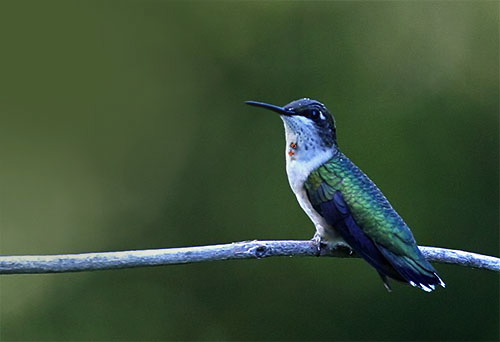
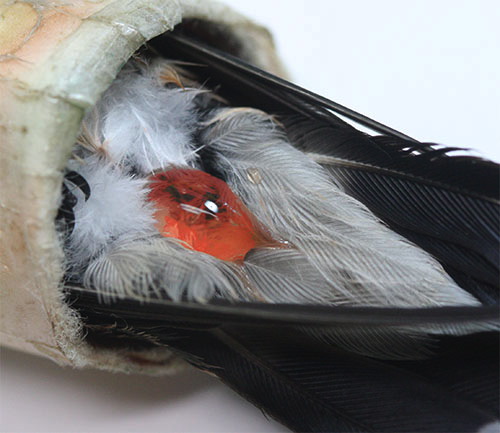


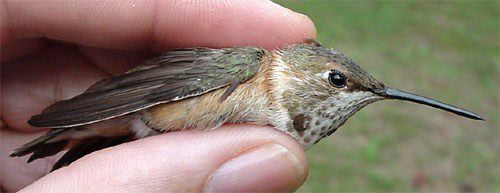
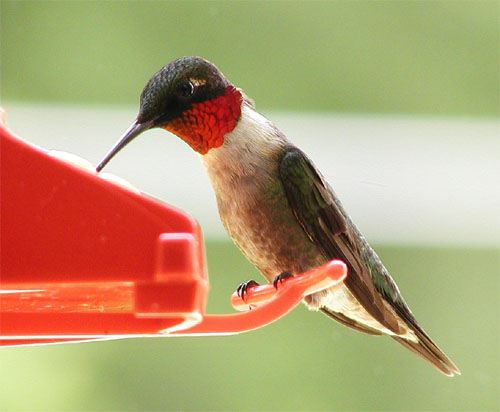

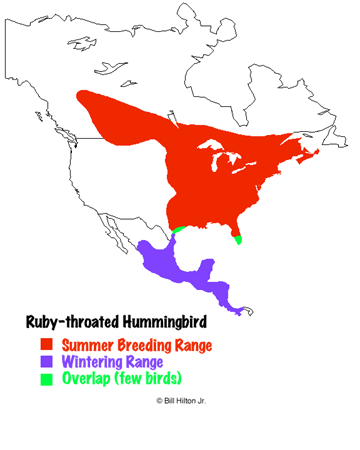
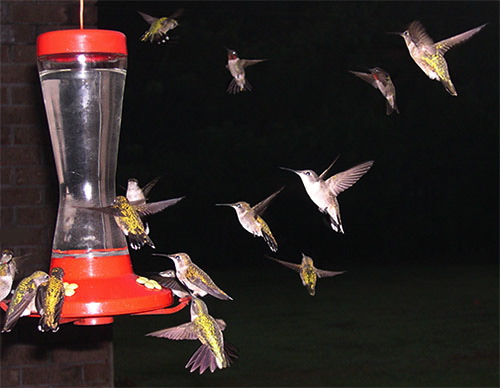
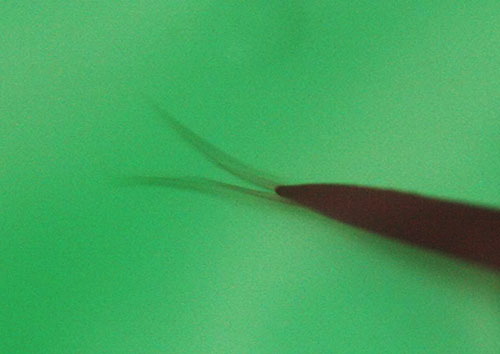
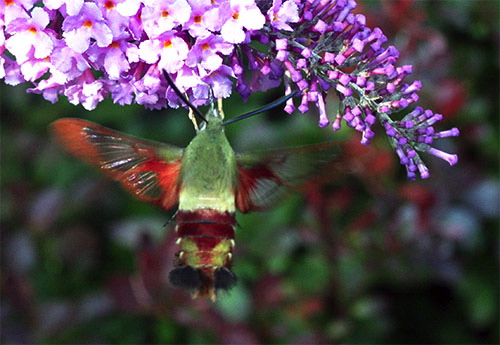
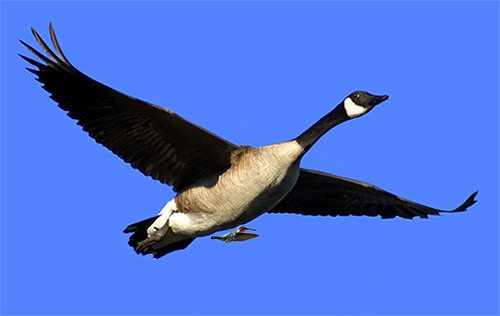

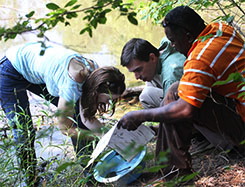
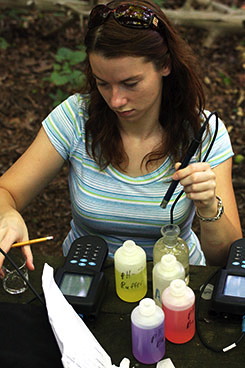
 Please report your
Please report your